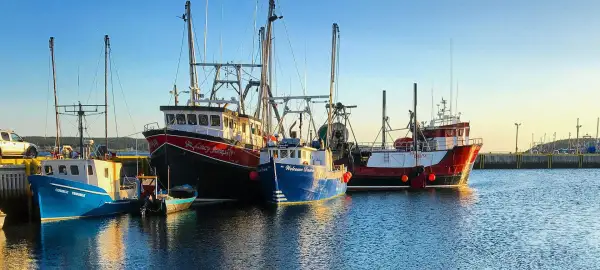Tourcode: NL1
- Overview
- Info & Inclusions
- Itinerary
- Map & Hotels
- Photos
- Dates & Prices
- Max Group Size 18
- L'Anse aux Meadows Viking settlement
- Scenic Gros Morne fjord cruise and ancient Tablelands
- Red Bay's UNESCO Basque whaling station
- Three nights on French Saint-Pierre and Miquelon islands
- Cape Bonavista and historic Trinity outport
- St. John's Signal Hill and Point Amour Lighthouse.
- Singles friendly (view options for single travellers)
From the World Heritage geology of Gros Morne's Tablelands—where ancient ocean floor meets the sky—we trace the footsteps of Norse explorers at L'Anse aux Meadows, then cross the legendary Strait of Belle Isle to discover Labrador's Basque whaling heritage at Red Bay. The adventure continues through Terra Nova's coastal wilderness to the Discovery Trail, where John Cabot first glimpsed the New World at Cape Bonavista, before exploring the perfectly preserved outport of Trinity with its narrow, tree-lined streets.
Our most unique experience awaits on the French islands of Saint-Pierre and Miquelon, where cobblestone squares echo with European charm and the aroma of fresh croissants mingles with salt air. The journey culminates in vibrant St. John's, perched dramatically above one of North America's finest natural harbours, where colourful row houses cascade down ancient hills toward the endless Atlantic.
- Full-time Tour Leader services.
- Breakfast and dinner (hotels & local restaurants) daily.
- All transport, accommodation, sightseeing and entrance fees for sites noted as 'visited' in the detailed itinerary.
- Gratuities for local guides, drivers, restaurant staff, porters (if available).
- As an exception to our usual policies pertaining to airport transfers, all customers will have these included regardless of whether or not you book your air through us. Those with extra nights will also be accommodated.
- Airfare to/from the tour.
- Tour Leader gratuities, lunches, drinks, personal items (phone, laundry, etc), domestic and international air taxes (if applicable), any excursions referenced as 'optional'.
- Optional trip cancellation insurance.
- PLEASE NOTE: The land price, single supplement, and any extra nights are subject to a +11.8% Canadian Tax. This amount is not included in the listed pricing.
- Seasonality and Weather:
Mid-summer departures in July and August offer the most favourable conditions for this Atlantic region adventure, with the warmest temperatures and longest daylight hours of the year. This timing provides optimal conditions for boat excursions, ferry crossings, and outdoor exploration, while wildflowers bloom across the coastal headlands and seabirds are most active at their nesting colonies. However, the North Atlantic's maritime climate remains famously changeable—layers are essential as morning fog can give way to brilliant sunshine, then cool evening breezes, sometimes all within a single day. Pack for versatility rather than specific temperatures, and embrace the dramatic weather patterns that have shaped both the landscape and the resilient character of the people who call this remarkable region home. - Transport and Travel Conditions:
We'll travel by comfortable private motorcoach throughout most of the journey, with opportunities to spot marine wildlife.
Expect some full travel days balanced with leisurely exploration time, as distances between communities can be significant in this sparsely populated region. Walking tours include uneven surfaces such as historic boardwalks, and natural coastal paths, though most sites offer alternative viewing options for those preferring less walking.
Ferry terminals and smaller hotel properties outside major centres typically don't provide porter services, so travellers should be comfortable managing their own luggage.
The reward for these modest physical demands is access to some of North America's most pristine and historically significant landscapes, where dramatic scenery and warm Maritime hospitality create truly unforgettable experiences.
Am I suitable for this tour? Please refer to our self-assessment form - Activity Level: 1
No particular physical activity is involved other than town/city walks and short walks to dinners and sites of interest, some of which are large.
To learn more about the Activity levels, please visit our tour styles page. - Accommodation:
All hotels and inns used on this trip will be a mid-range standard (2-3-star), with private bath. Due to the isolated nature of some locales, and because there is not a lot of tourist traffic in some places covered, some hotels may be of a simpler standard. Our St John's hotel will be well-located and of an international standard.
Please note that porters will be available only in St John's (you will need to be independent with your baggage).
DAY ONE: Why we stay in Corner Brook and not Deer Lake: If you look at a map, it might seem illogical to spend this night in Corner Brook only to backtrack past Deer Lake the following day. The limited number of hotels in Deer Lake are accustomed to individual travellers booking stays directly and are not geared for groups, applying rigid booking terms that make holding space for our travellers difficult for us. Our chosen hotel in Corner Brook is a "nice" property with some charm and character and a great in-house restaurant, as opposed to a typical airport hotel one would find in Deer Lake. As always we look forward to your feedback. - Staff and Support:
Full-time, locally-based expert trip leader plus local step-on guides for a day or half day at several locations. We will have one main coach driver, - Group Size:
Maximum 18 plus Tour Leader
- Day 1:Arrival Deer Lake / Corner Brook, NewfoundlandToday we arrive in Deer Lake (airport YDF) on Newfoundland's west coast and transfer to Corner Brook (45 min), Newfoundland's second largest city.*
Why we stay in Corner Brook and not Deer Lake: If you look at a map, it might seem illogical to spend this night in Corner Brook only to backtrack past Deer Lake the following day. The limited number of hotels in Deer Lake are accustomed to individual travellers booking stays directly and are not geared for groups, applying rigid booking terms that make holding space for our travellers difficult for us. Our chosen hotel in Corner Brook is a "nice" property with some charm and character and a great in-house restaurant, as opposed to a typical airport hotel one would find in Deer Lake. As always we look forward to your feedback.
* LAND AND AIR passengers' transfers are included in their tour cost; LAND ONLY passengers are not entitled to arrival transfers (details included with your pre-trip info package).
Overnight in Corner Brook.
Included Meal(s): Dinner, if required - Day 2:Corner Brook - Gros Morne National Park - Port au ChoixThis morning we'll spend a bit of time in Corner Brook to explore some local highlights. We'll visit the Captain Cook Monument, the iconic Newfie Bullet, and the unique Old Man Rock formation. We'll also see the Heritage Tree and enjoy a photo opportunity at the picturesque Lobster Cove Lighthouse.
We'll then set out by private motorcoach along the sheltered west coast of the Northern Peninsula, via Gros Morne National Park, a World Heritage Site. After a stop at the park's visitor center, from a distance we'll take in the stunning views of Western Brook Pond.
We then continue along the Viking Trail, passing through the lands the Norsemen settled over 1,000 years ago. The scenic route features spectacular mountains, forests, rivers, and lakes.
Later, we'll visit Arches Provincial Park to marvel at the natural rock formations carved by the ocean. Our day concludes with a visit to the Port au Choix National Historic Site, a 4,500-year-old time capsule showcasing rare and important vestiges of ancient Maritime Archaic Indian, Groswater Paleoeskimo, and Dorset Paleoeskimo cultures. The site's raised shoreline and alkaline soil conditions have preserved rich artifacts, which we'll learn about through interactive exhibits, a diorama of a Dorset house, and a short film at the Visitor Centre.
Overnight in Port au Choix.
Included Meal(s): Breakfast and Dinner - Day 3:Port au Choix - L'Anse aux Meadows - St AnthonyThe highlight of our excursion north is a visit to L'Anse aux Meadows National Historic Park, the oldest European settlement in North America and a UNESCO World Heritage Site. This site is thought to be the elusive "Vineland" of Norse legends, featuring overgrown mounds that were excavated in the 1960s to reveal the foundations of eight sod houses built by Vikings around AD 1000. With a local guide, we'll tour the sod-house foundations and learn about the history of the Vikings in this area and other ancient treasures.
Before reaching L'Anse aux Meadows, we'll stop in Dark Tickle to indulge in delicious Newfoundland home-baked treats. We'll also visit Roadside Gardens and Woodpiles, keeping an eye out for moose and bears in the beautiful scenery.
After exploring L'Anse aux Meadows, we'll head to St. Anthony, home of the Grenfell Mission. We'll visit the Interpretation Centre and browse the unique craft center, learning about the local history and culture.
Overnight in St Anthony.
Included Meal(s): Breakfast and Dinner - Day 4:St Anthony - St. Barbe - Ferry to Blanc Sablon, Quebec - L'Anse au Clair, LabradorToday's journey provides a closer look at some of the earliest settlements in Canada. We travel to St. Barbe for the 1PM crossing on the Bell Isle Ferry to Labrador, keeping an eye out for wildlife along the way.
Once we ferry across the Strait of Belle Isle (known as Iceberg Alley), we'll visit the fishing village where Jacques Cartier first landed at Blanc Sablon, Quebec. As we drive along Labrador's famous Coastal Drive Route, we'll take in the wild landscape dotted with small coastal settlements inhabited mainly by the descendants of fishermen who settled here 200 years ago.
We'll finish our day in L'Anse au Clair, a community with a rich history dating back to the early 1700s, when French fishing interests first established a presence here. We'll visit the Gateway to Labrador Visitor Centre. If the sky is favourable this evening, you may catch a glimpse of the breathtaking Northern Lights.
Overnight in L'Anse au Clair.
Included Meal(s): Breakfast and Dinner - Day 5:Labrador ExplorationToday we'll explore the rich history of this fascinating region, delving into stories that span centuries of maritime adventure and cultural exchange. We'll visit the Red Bay National Historic Site, a UNESCO World Heritage Site that preserves one of the most significant archaeological discoveries in North America. Here we'll learn about the remarkable Basque whaling operation that flourished from the 1530s to the early 1600s, when this remote outpost was the world's whaling capital, supplying Europe with precious whale oil for lamps, soap, and leather treatment.
The Basque whalers developed sophisticated hunting techniques and processing methods, establishing seasonal settlements that brought together workers from Spain and France. The site features several remarkably preserved shipwrecks from the 16th century, including the San Juan galleon discovered in 1978 - one of the world's earliest intact whaling vessels. The state-of-the-art Interpretation Centre showcases an impressive collection of tools, harpoons, cooperage equipment, and personal effects that confirm European habitation of this coast during the 16th and 17th centuries. Interactive exhibits and artifacts tell the story of these brave mariners who crossed treacherous Atlantic waters in pursuit of the mighty right and bowhead whales.
Our journey continues to the Point Amour Lighthouse, built in 1857 and standing 109 feet tall as the tallest lighthouse in Atlantic Canada and the second tallest in all of Canada. This imposing white tower has guided vessels safely through the Strait of Belle Isle for over 160 years. Take a trip up the 132 challenging steps - each one worth the effort - to reach the lantern room and witness incredible panoramic views of Labrador's rugged coastline, the Strait of Belle Isle, and on clear days, the distant shores of Newfoundland.
Overnight in L'Anse-au-Clair.
Included Meal(s): Breakfast and Dinner - Day 6:Labrador - Ferry & Bus to Cow Head, NewfoundlandThis morning we return to Newfoundland by the 10:30AM ferry crossing back across the Strait of Belle Isle. As we board our motorcoach once again, we'll travel south along Newfoundland's Northern Peninsula, retracing our steps through the dramatic landscapes we explored earlier in our journey.
We'll head to Cow Head in the heart of Gros Morne National Park. This World Heritage Site boasts stunning geology, shaped by 485 million years of natural forces. Gros Morne is renowned for its complex geology, which played a crucial role in proving the theory of plate tectonics - the park contains some of the world's best examples of exposed ocean floor and mantle rock.
As we approach Cow Head, we'll catch up on some sightseeing that might not have been possible during our earlier passage through the area. The drive offers spectacular vistas of the Long Range Mountains, ancient peaks that are part of the Appalachian Mountain system. We'll pass through small fishing communities that dot the coastline, each with their own unique character and maritime heritage.
Cow Head itself is a charming coastal community strategically positioned between the mountains and the sea. The town serves as an excellent base for exploring the park's geological wonders. As we settle into our accommodation, we'll take in the breathtaking scenery, featuring towering cliffs, boreal forests, and the dramatic freshwater fjords that make this region so distinctive. We'll learn about the area's rich history, from the Mi'kmaq inhabitants who first called this land home, to the European fishermen who established settlements here centuries ago, drawn by the abundant marine resources of the Gulf of St. Lawrence.
Overnight in Cow Head.
Included Meal(s): Breakfast and Dinner - Day 7:Cow Head - Table Lands & Gros Morne - Grand FallsThis morning, we visit the Tablelands in Gros Morne National Park, a breathtaking sight featuring a flat-topped rock formation typically found deep in the earth's mantle. We'll take a scenic boat tour (weather-permitting) as you learn about the geology of the Tablelands, spot bald eagles that frequent the deep waters of the fjord, and hear the history of the small villages nestled on the shores. It is an unforgettable experience; some say the scenery is unequaled in eastern Canada.
We'll also stop at Sally's Cove, where we'll learn about the local lobster fishing industry. On land, we'll explore the Tablelands and keep an eye out for Pitcher Plants, the official flower of Newfoundland and Labrador.
After this unforgettable experience in Gros Morne, we'll bid goodbye to the "Viking Trail" and head south then east through open country dotted with lakes and patches of spruce and pine. As we travel along the Exploits River and through thick forest country, we'll make our way to the town of Grand Falls. Founded in 1905, Grand Falls was discovered by Lieutenant John Cartwright in 1768, who named the waterfall after its impressive size. The town's history is tied to the pulp and paper mill, which was established by Alfred Harmsworth (Baron Northcliffe) as an alternative source of newsprint. Today, Grand Falls-Windsor is central Newfoundland's major service and distribution centre.
Overnight in Grand Falls.
Included Meal(s): Breakfast, Lunch and Dinner - Day 8:Grand Falls - Twillingate - GanderThis morning, we visit the Salmonid Interpretation Centre to learn about one of North America's largest Atlantic salmon enhancement projects. Next, we'll head to Twillingate, one of Newfoundland's oldest seaports, settled in 1700. We'll stop at the Long Point Lighthouse, taking in the scenic views of the surrounding area. In Twillingate, we'll visit the Twillingate Museum, featuring a collection of antiques gathered from local homes, and shop for fine knitted handicrafts produced in the area.
Before heading to Gander, we'll also visit the Beothuk Interpretation Centre to learn about the history and culture of the indigenous people who inhabited this area for generations. We'll gain a deeper understanding of the Beothuk people and their significance in Newfoundland's rich history.
Overnight in Gander.
Included Meal(s): Breakfast and Dinner - Day 9:Gander - Terra Nova National Park - Salvage - ClarenvilleBefore leaving Gander, we'll have a unique opportunity to visit the Gander Airport, one of the most important aviation hubs in North America. Strategically located on the transatlantic flight path, Gander Airport has played a significant role in international aviation history. We'll learn about the airport's importance as a refueling stop for transatlantic flights, and its impact on the local community. The airport also played a pivotal part in Operation Yellow Ribbon, particularly during the events of 9/11, when it became a temporary haven for thousands of stranded passengers and crew members from over 240 flights.
We then proceed to Terra Nova National Park on Bonavista Bay, with its tiny islands, rocky headlands, and forested slopes. At the park's visitor center, we'll stop by the Terra Nova Interpretation Centre, where we'll learn about the area's marine life and get hands-on experience by touching various sea creatures.
As we drive along the "Road to the Isles," we'll pass through charming coastal towns with colourful place names like "Too Good Arm," "Virgin Arm," and "Crow Head." Keep an eye out for drifting icebergs and whales along the coast.
Next, we'll visit Salvage, a picturesque fishing village, where we'll explore the Fisherman's Museum and see traditional fishermen's huts and colourful clapboard homes. We'll continue to Clarenville, the gateway to the Discovery Trail, which features stunning scenery, historic sites, and coastal towns. This trail extends down the Bonavista Peninsula to Trinity and Bonavista, reputedly the site of John Cabot's first landing. We'll overnight in Clarenville.
Overnight in Clarenville.
Included Meal(s): Breakfast and Dinner - Day 10:Clarenville & The Discovery TrailToday, we'll explore two of Newfoundland's most famous outports, starting with the site of John Cabot's arrival. We'll drive to Cape Bonavista, where Cabot is believed to have first sighted the New World on June 24, 1497. Here, we'll visit the Bonavista Lighthouse, taking in the stunning views of the surrounding coastline. We'll also stop for a photo opportunity with the iconic Cabot Statue, commemorating the historic landing.
Next, we'll head to Trinity, named by Portuguese explorer Gaspar Corte Real when he sailed into the harbour on Trinity Sunday in 1500. We'll stroll through Trinity's narrow, tree-lined streets, admiring the beautifully preserved historic buildings. We'll also visit the Trinity Heritage Houses, showcasing the charm and character of this famed outport. After a day of exploring these historic sites, we'll overnight again in Clarenville.
Overnight in Clarenville.
Included Meal(s): Breakfast and Dinner - Day 11:Clarenville, Newfoundland - Ferry to Saint-Pierre, FranceThis morning, we depart Clarenville and head south onto the beautiful Burin Peninsula via the famous "Heritage Run" route. The area is steeped in history, with the Grand Banks once being a rich fishing ground that supplied the world with codfish for centuries. We'll pass through Placentia Bay's collection of islands and communities tucked into Fortune Bay, taking in the unsheltered vistas and haze-covered French outposts at the peninsula's tip.
As we travel to the village of Fortune, we'll prepare for our afternoon ferry ride to the French islands of Saint-Pierre and Miquelon. These islands have a fascinating maritime history and are part of France, with their own time zone and a distinct European feel. You'll experience French culture firsthand, with French as the primary language, delicious French food, and the Euro as currency.
During our time on Saint-Pierre, we'll take a city/island tour and explore the island's unique identity. We'll visit the "Place du General de Gaulle" waterfront square, the "Zaspiak Bat" Basque playing wall, the "Pointe aux Canons" lighthouse, the salt houses, and the "Pointe du Diamant." We'll also stop by the "Arche" museum, showcasing the island's rich history. This experience is even more special, as Saint-Pierre was the inspiration for the CBC series "Saint-Pierre." We'll overnight on the charming island of Saint-Pierre.
Overnight on Saint-Pierre.
Included Meal(s): Breakfast and Dinner - Day 12:Miquelon & LangladeThis morning, we'll depart by ferry for a day-long excursion to the island of Miquelon. The island's landscape, with its rolling hills and scenic vistas, may remind you of some Maritime areas. We'll explore the village, home to around 700 people, mostly descendants of Acadians and Basques.
At the local museum, we'll learn about the history and culture of the island's people. Depending on the time of year, we might even catch a glimpse of wild horses grazing on the land. Miquelon is connected to Langlade by a 7.5-mile-long sand isthmus, known as the Dune, which has been the scene of many shipwrecks.
The island is a haven for those seeking tranquility, with its rich plant and animal life, endless landscapes, ponds, beaches, and hills. We can indulge in the island's specialty foods. After a wonderful day on Miquelon, we'll transfer back to Saint-Pierre in the evening for dinner and overnight in Sainte-Pierre.
Overnight in Sainte-Pierre.
Included Meal(s): Breakfast and Dinner - Day 13:Saint-Pierre & Ile Aux MarinsSaint-Pierre is a small but lively harbour town. Music bands and singer/writers are often booked in the city's bar, street performers entertain the passers-by and many summer/autumn activities play a part in giving the town its festive spirit.
This morning we will take boat to Ile Aux Marins and enjoy a guided walking tour of this picturesque museum island. On our guided walk, learn about the heyday of the Grand Banks and inshore fisheries. Visit some of the island's historical buildings (the Museum Archipelitude, the church,) see photos and artifacts from the past, and hear stories that will make this a memorable moment of your visit to Saint-Pierre et Miquelon.
We return to Saint-Pierre with the balance of the day at leisure.
Overnight in Saint-Pierre.
Included Meal(s): Breakfast and Dinner - Day 14:Saint-Pierre, France - Fly to St John's, NewfoundlandToday we fly to St. John's.
St. John's, the provincial capital, is the perfect combination of big-city luxury and traditional small-town charm. It is one of the oldest and most easterly cities in North America, and has become a rare destination full of character and charisma, with a contemporary, sophisticated edge. The town is quite walkable, with lots of great shopping, restaurants, historical sites and more.
Depending on ever-changing schedules, we may end up with free time on Sainte-Pierre or in St John's. We apologize for any potential imbalance of timing.
Overnight in St John's.
Included Meal(s): Breakfast and Dinner - Day 15:St John's Area TouringToday, we'll enjoy a city tour of St. John's, Canada's most easterly city, exploring its historic sites, including Signal Hill with its stunning view of St. John's Harbour, the iconic Cabot Tower, and the beautiful Basilica of St. John the Baptist. After lunch downtown, we'll head to Bay Bulls for a thrilling wildlife-watching boat tour on the Witless Bay Ecological Reserve (weather-permitting).
During the tour, we'll have a chance to see one of the largest colonies of puffins, with over 260,000 pairs nesting in the reserve, as well as potential whale sightings. The bay is teeming with life, featuring four million wings beating and 40-tonne whales pulsing through the clear blue water.
Next, we'll visit Cape Spear, Canada's most easterly point, located at the Cape Spear National Historic Site. We'll explore the oldest surviving lighthouse in Newfoundland, restored to its 1839 appearance, and learn about the life of a lightkeeper and his family in the mid-19th century. This evening, we'll gather for a farewell dinner back in the city, reflecting on the incredible experiences we've had.
Overnight in St John's.
Included Meal(s): Breakfast and Dinner - Day 16:DepartureDeparture from St John's.
BON VOYAGE!
Included Meal(s): Breakfast
Countries Visited: Canada and France
*The red tour trail on the map does not represent the actual travel path.
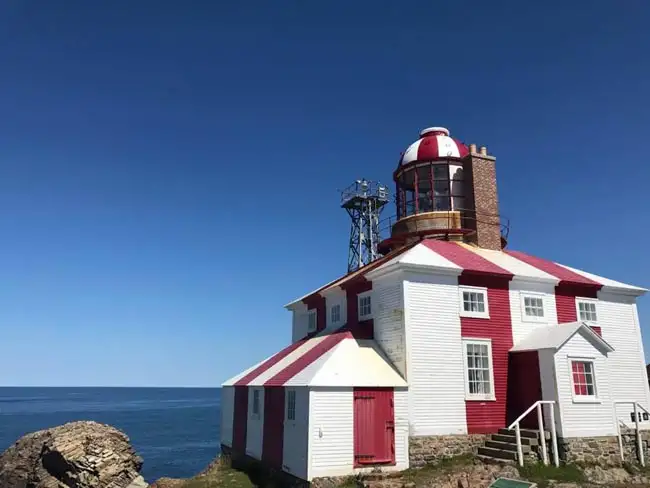
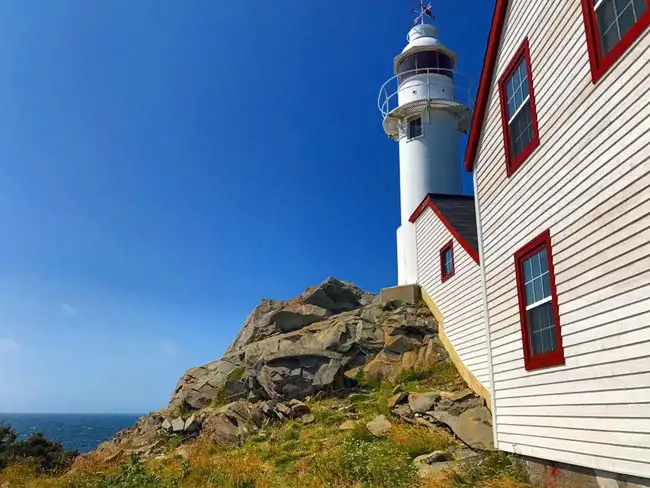
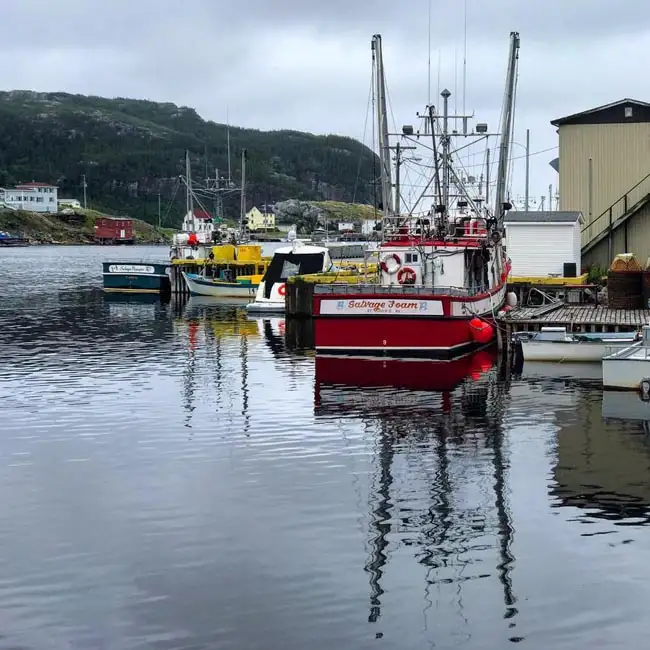
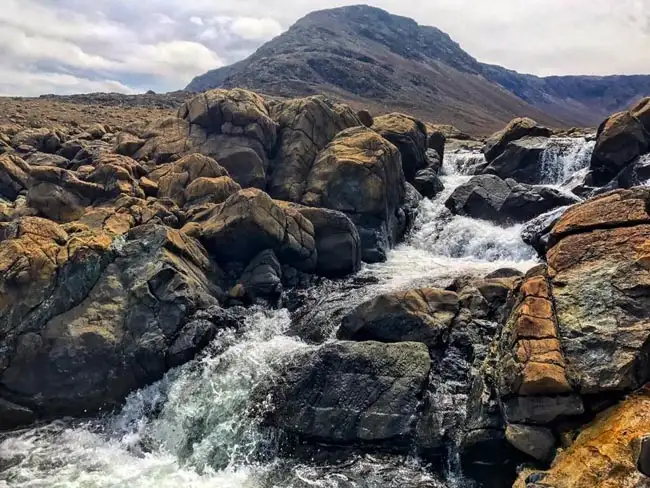
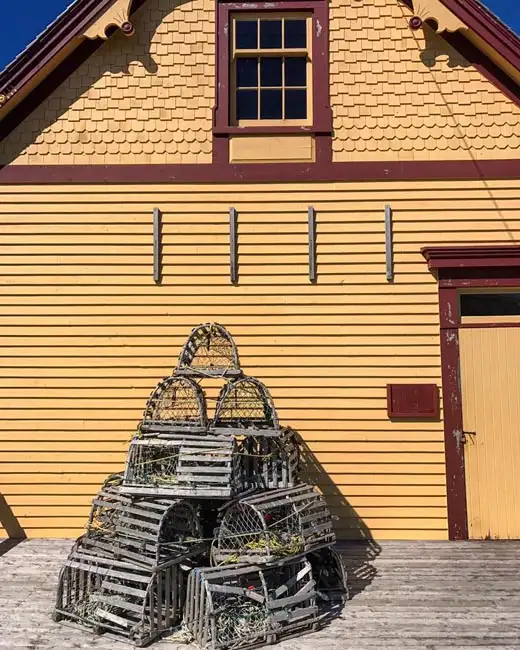
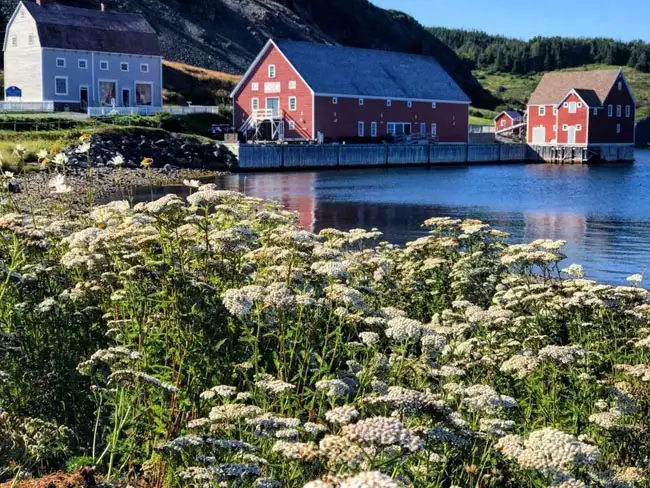
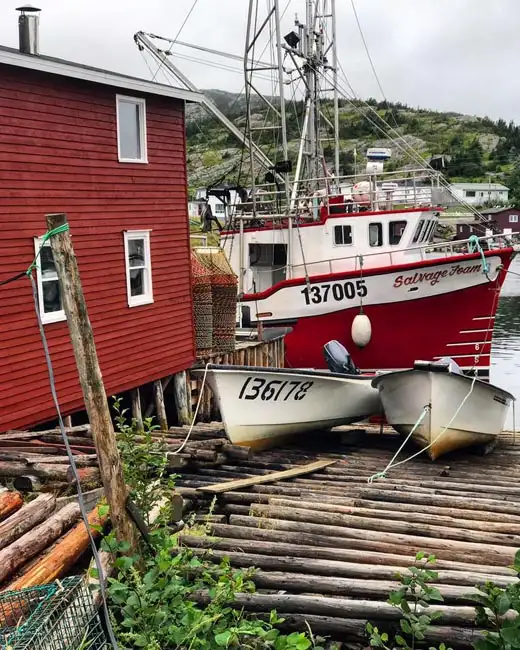
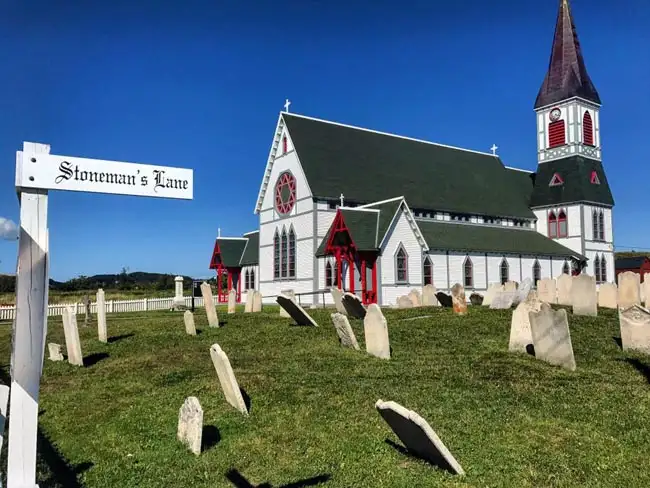
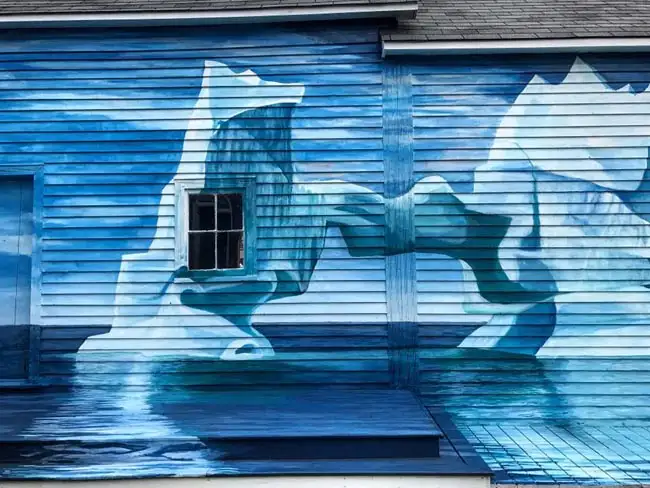
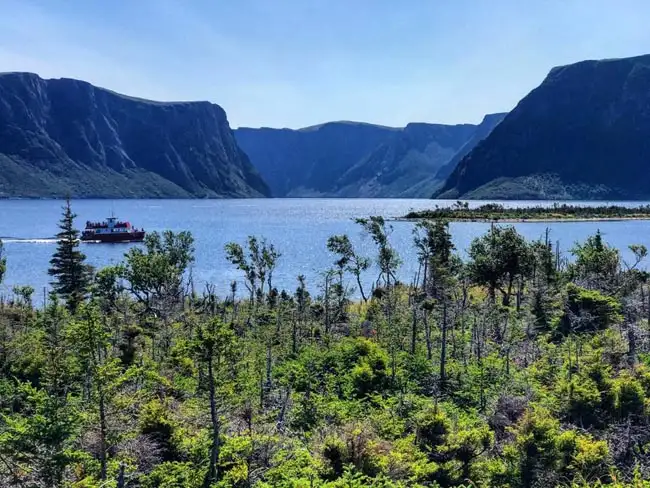

Book This Tour
- Final payment: Due 90 days prior to departure.
- Deposit: A non-refundable $500 USD Deposit is required at booking.
- Optional Single Supplement: $1410 USD (number of singles limited).
(View options forsingle travellers) - Transfering Tour or Date: Transferring to another tour or tour date is only permissible outside of 120 days prior to departure and is subject to a $100 USD change fee.
(Read our cancellation policy) - PLEASE NOTE: The tour price, single supplement, and any extra nights are subject to a +11.8% Canadian Tax. This amount is not included in the above listed pricing.
Prices below are per person, twin-sharing costs in US Dollars (USD). Pricing does not include airfare to/from the tour and any applicable taxes.
Tourcode: NL1
Frequently Asked Questions
- What is the maximum number of participants on a trip?Most of our tours carry a maximum of 18 participants; some tours (ie hiking tours) top out at 16. In the event that we do not achieve our minimum complement by our 90-day deadline, we may offer group members the option of paying a "small-group surcharge" as an alternative to cancellation. If all group members agree, we will confirm the trip at existing numbers; this surcharge is refundable in the event that we ultimately achieve our regular minimum. If the small group surcharge is not accepted, we will offer a refund of your deposit or a different trip of your choice.
- Can I extend my tour either at the beginning or end? What about stopovers?Yes, you can extend your tour either at the beginning or the end and we can book accommodation in our tour hotel. Stopovers are often permitted, depending on air routing. Stopovers usually carry a "stopover" fee levied by the airline.
- How do I make a reservation? How and when do I pay?The easiest way to make a reservation is via our website; during office hours, you are also more than welcome to contact us by telephone.
A non-refundable deposit is payable at the time of booking; if a reservation is made within 90 days, full payment is required. Some trips require a larger deposit. If international airline bookings require a non-refundable payment in order to secure space or the lowest available fare, we will require an increase in deposit equal to the cost of the ticket(s).
Early enrolment is always encouraged as group size is limited and some trips require greater preparation time.
Once we have received your deposit, we will confirm your space and send you a confirmation package containing your trip itinerary, any visa/travel permit related documents, invoice, clothing and equipment recommendations, general information on your destination(s), and forms for you to complete, sign and return to us. Your air e-tickets (if applicable), final hotel list, final trip itinerary, and instructions on how to join your tour, will be sent approximately 2-3 weeks prior to departure. - What about cancellations, refunds, and transfers?Please review our cancellation policy page for details.
- I am a single who prefers my own room. What is a single supplement?All of our tours have a single supplement for those who want to be guaranteed their own room at each location.
This supplement is a reflection of the fact that most hotels around the world do not discount the regular twin-share rate for a room by 50% for only one person occupying a room. Most hotels will give a break on the price, but usually in the range of 25-30% of the twin-share rate. This difference, multiplied by each night, amounts to the single supplement.
The conventional amount can also vary from country to country and some destinations are more expensive than others for single occupancy. In order to be "single friendly," the supplements we apply are not a profit centre for us and we do our best to keep them as reasonable as possible.
On most tours we limit the number of singles available, not to be punitive, but rather because many hotels allow for only a limited number of singles; some smaller hotels at remote locations also have a limited number of single rooms available.
Please note that most single rooms around the world are smaller than twin-share rooms and will likely have only one bed. - Do you have a shared accommodation program?Yes! If you are single traveller and are willing to share, we will do our best to pair you with a same-gender roommate. On most of our tours, if we fail to pair you, we will absorb the single supplement fee and you will default to a single room at no extra charge. At some destinations, however, where single rooms are not significantly discounted, or not at all, we may apply a "mandatory" single in the event that we cannot find you a share partner. This is usually 50% of the usual supplement, but can be as much as 100%. If applicable, this proviso will be noted on each tour page on this website, on your invoice, and in our tour date/price book (available for download under "Resources").
